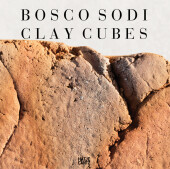 Neuerscheinungen 2017Stand: 2020-02-01 |
Schnellsuche
ISBN/Stichwort/Autor
|
Herderstraße 10
10625 Berlin
Tel.: 030 315 714 16
Fax 030 315 714 14
info@buchspektrum.de |

Mark Gisbourne, Dakin Hart, Bosco Sodi
(Beteiligte)
Bosco Sodi
Clay Cubes
Vorlage: Sodi, Bosco
2017. 148 S. 65 illustrations. 29 cm
Verlag/Jahr: HATJE CANTZ VERLAG 2017
ISBN: 3-7757-4277-8 (3775742778)
Neue ISBN: 978-3-7757-4277-1 (9783775742771)
Preis und Lieferzeit: Bitte klicken
Würfelspiel aus verbrannter Erde
It starts with a simple idea: massive cubes of clay, half a meter high. The sculptures of Mexican artist Bosco Sodi ( 1970 in Mexico City), cubes of fired clay stacked in high columns, ought to have exploded while being fired due to the extreme heat released in the material: sand, earth, and water. The richly illustrated publication on Sodis Clay Cubes explores the course of his experiment. He worked for several months creating the cubes, from compounding the material through layering and forming to drying and firing them in a kiln built especially for this purpose. Piled up to columns in the exhibition, they resemble the proportions of the human body and at the same time create an architecture reduced to the essential. Each cube bears the traces of the work process, following Sodis typical approach: the process of trying out and arriving as a result whose appearance he may influence, but not foresee.
It starts with a simple idea: massive cubes of clay, half a meter high. The sculptures of Mexican artist Bosco Sodi ( 1970 in Mexico City), cubes of fired clay stacked in high columns, ought to have exploded while being fired due to the extreme heat released in the material: sand, earth, and water.
The richly illustrated publication on Sodi´s Clay Cubes explores the course of his experiment. He worked for several months creating the cubes, from compounding the material through layering and forming to drying and firing them in a kiln built especially for this purpose. Piled up to columns in the exhibition, they resemble the proportions of the human body and at the same time create an architecture reduced to the essential. Each cube bears the traces of the work process, following Sodi´s typical approach: the process of trying out and arriving as a result whose appearance he may influence, but not foresee.


